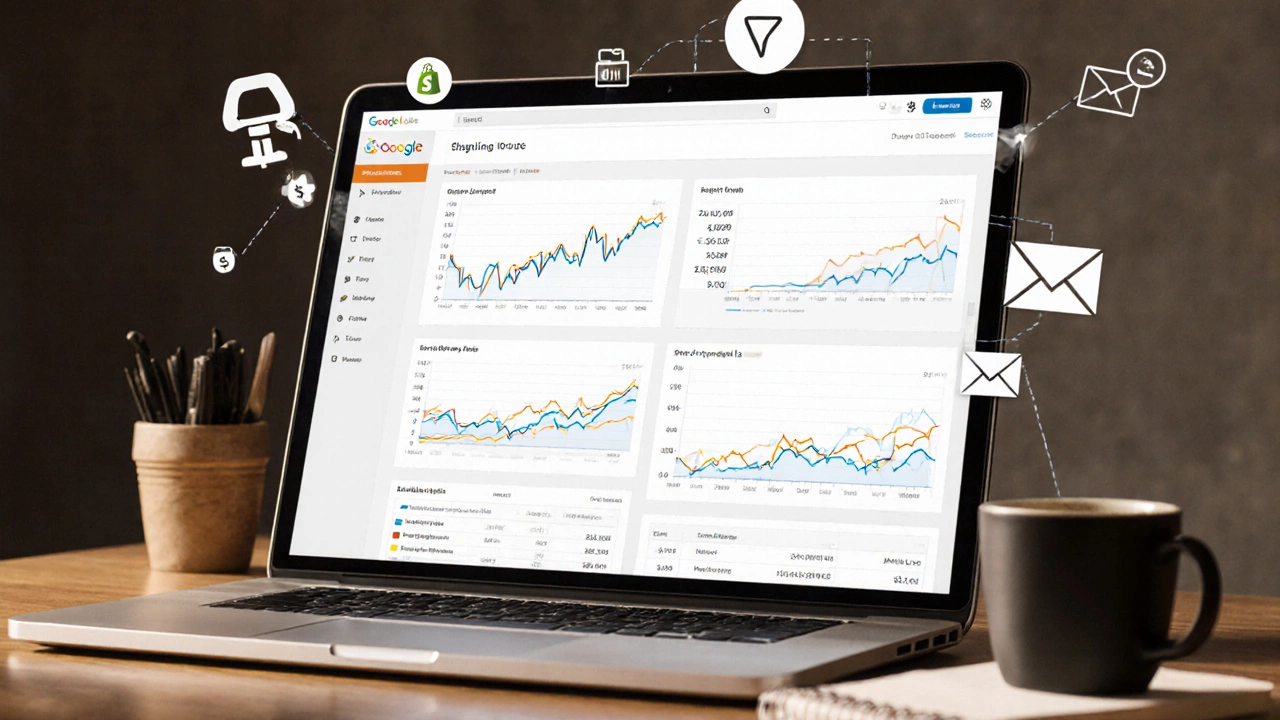Website Value Calculator
Calculate Your Website's Value
Results will appear here
Ever looked at a small blog or online store and wondered, how much is an average website worth? It’s not just about how fancy it looks. A simple WordPress site with 500 monthly visitors might sell for $500. A well-run ecommerce store pulling in $10,000 a month could go for $300,000 or more. The difference isn’t in the design-it’s in the numbers behind it.
What Actually Drives a Website’s Value?
A website isn’t worth what you paid to build it. It’s worth what someone else will pay to own it. That means value comes from three things: traffic, revenue, and how easy it is to run.
Think of it like a rental property. A house in a bad neighborhood with broken windows might cost $200,000 to build, but if no one wants to rent it, it’s not worth much. But a clean, well-maintained unit in a busy area that brings in $2,000 a month? That’s valuable. Websites work the same way.
Here’s how each factor breaks down:
- Traffic: More visitors = more potential buyers. Sites with consistent, organic traffic from Google get higher valuations. A site with 50,000 monthly visitors is worth far more than one with 5,000-even if both make the same money.
- Revenue: This is the biggest driver. If your site makes $5,000 a month in profit, buyers will typically pay 24 to 48 times that amount. That’s $120,000 to $240,000. Profit matters more than revenue because it shows you’re not just spending money to make money.
- Runnability: A site that needs constant coding fixes or relies on one person to update everything is risky. Buyers pay more for sites with automated systems, documented processes, and tools like Shopify, WordPress with plugins, or custom CMS that don’t require deep technical skills.
Real Examples: What Sites Are Actually Selling For
Let’s look at real cases from marketplace data (Flippa, Empire Flippers, Quiet Light) from early 2025:
- Small blog (5,000 monthly visitors, $800/month ad revenue): Sold for $18,000. That’s 22.5x monthly profit. Buyers liked the consistent traffic and low maintenance.
- Ecommerce store (15,000 monthly visitors, $3,500/month profit, Shopify-based): Sold for $168,000. That’s 48x monthly profit. The store had a loyal customer base and email list of 12,000 people.
- Lead gen site (8,000 monthly visitors, $1,200/month from local service clients): Sold for $36,000. That’s 30x monthly profit. The site ranked for high-value keywords like "plumber in Austin" and had a simple, automated lead system.
- Personal portfolio site (2,000 monthly visitors, $0 revenue): Listed for $5,000. No offers. It had no income stream and no audience. Just a resume in HTML.
The pattern is clear: income + traffic + low effort = higher price. Sites with no profit, even if they have traffic, sell for pennies-or not at all.
How to Calculate Your Website’s Value
You don’t need a fancy tool. Here’s a simple formula most buyers use:
Website Value = Monthly Profit × Multiplier
The multiplier depends on risk:
- 15-25x: For sites with unstable traffic, one-time income (like affiliate links that might disappear), or heavy dependence on one platform (like Pinterest or TikTok).
- 25-35x: For stable blogs, SaaS tools, or lead gen sites with diversified traffic and recurring income.
- 35-50x: For ecommerce, subscription services, or apps with loyal customers, strong email lists, and automated systems.
Example: Your site makes $2,000/month profit. It has 20,000 monthly visitors, mostly from Google. It runs on WordPress with plugins you didn’t code. You’ve documented everything. You’re a 35x multiple. $2,000 × 35 = $70,000.
That’s your ballpark. Buyers will negotiate down, but this gives you a starting point.

What Lowers a Website’s Value
Not all websites are created equal. Here’s what kills value:
- No profit: Even a site with 100,000 visitors is worthless if it loses money every month.
- One-person dependency: If only you can update the site, fix the plugin, or respond to customers, buyers will assume they’ll need to hire someone-and that costs money.
- Over-reliance on one traffic source: If 90% of your traffic comes from Facebook Ads, and you shut off the ads, traffic dies. Buyers hate that.
- Outdated tech: Sites still running on PHP 5.6 or WordPress 3.2 are red flags. Security risks = lower price.
- No documentation: If you can’t explain how the site works in a few pages, buyers assume it’s a mess.
One seller had a $50,000 site that got zero offers. Why? He didn’t have access to the Google Analytics account. The buyer couldn’t verify traffic. That’s it. One missing login killed the deal.
What Increases a Website’s Value
These are the things buyers pay extra for:
- Recurring revenue: Monthly subscriptions, memberships, or retainer clients. These are gold.
- Email list: 5,000+ engaged subscribers? That’s worth 10-20% more on top of your valuation.
- Brand recognition: If people know your name-even if you’re small-it adds trust and makes scaling easier.
- Automated systems: Email sequences, payment processing, inventory updates, customer support bots. The less you have to do manually, the more it’s worth.
- Multiple income streams: Ads + affiliate + digital products = less risk. Buyers like diversification.
One seller added a $50/month email course to his blog that made $1,200/month. His valuation jumped from $30,000 to $55,000-not because traffic changed, but because income became more stable.

Where to Sell Your Website
You can’t just list it on Facebook. Here are the top three places to sell websites in 2025:
- Empire Flippers: Best for sites making $1,000+/month. They vet buyers, handle escrow, and take 10-15% commission. You get serious offers.
- Flippa: More listings, more low-budget buyers. Good for sites under $10,000. You handle everything yourself.
- Quiet Light Brokerage: For sites over $100,000. They do full due diligence and connect you with private investors. Higher fees, higher returns.
Don’t use eBay, Craigslist, or random Facebook groups. You’ll get lowball offers or scams.
How Long Does It Take to Sell a Website?
It’s not instant. Most sites take 30 to 90 days to sell. Here’s the breakdown:
- Under $5,000: 2-6 weeks. High volume of buyers, low competition.
- $5,000-$50,000: 6-12 weeks. Buyers are more careful. Need financial docs.
- $50,000+: 3-6 months. Fewer buyers. More due diligence. Legal checks.
Speed depends on how clean your records are. If you have 12 months of profit screenshots, traffic reports, and platform access ready, you’ll sell faster.
Final Tip: Don’t Sell Too Early
Most people sell when they’re burned out. But if your site is growing, hold on. A site making $2,000/month now might make $5,000/month in 6 months. That’s an extra $120,000 in value.
Instead of selling because you’re tired, sell when:
- You’ve hit a plateau and can’t grow without hiring.
- You found a better opportunity and need capital.
- You want to retire or move on-but the site is still profitable.
Valuing a website isn’t guesswork. It’s math. Track your numbers. Clean up your systems. Document everything. Then you’ll know exactly what you’ve built-and what it’s worth.





